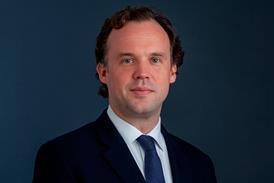Client demand is driving a growing number of law firms to move away from the billable hours model – however, the shift towards alternative fee models does not necessarily spell the end of lawyers billing in six-minute increments, according to a new study by LexisNexis.
With nearly half of all external legal spend taking place through alternative fee arrangements, such as flat or fixed fees, LexisNexis decided to explore the pros and cons of the billable hour model, the challenges of pricing matters when using alternative fee structures, and how these trends are likely to develop.
According to a Bloomberg survey, 85% of law firm respondents said client demand was driving alternative fee structures. Flat fees are, by far, the most popular alternative billing structure. Two thirds of UK firms told a BigHand survey that billing write-offs are on the rise.
Bob Mignanelli, chief operating officer for legal at Haleon, a FTSE 100 consumer healthcare business, told the report that he would be hesitant to move forward with a firm unwilling to engage in a conversation about alternative fee arrangements.
An unnamed lawyer who has worked in private practice and in-house said the billable hour was out of date and creates negative incentives. ‘People who work more efficiently are unduly penalised, because they bill less than someone who maybe took twice as long to do the same piece of work. We should be rewarding people for efficiency, not penalising them.’
Other downsides to the billable hour model highlighted in the report include the additional pressure that it creates for lawyers from underrepresented backgrounds asked to participate in non-billable diversity initiatives.
Georgia Dawson, senior partner at magic circle firm Freshfields Bruckhaus Deringer, is quoted in the report saying she would like to see the industry 'move towards more of a focus on outputs and the value that is being delivered by lawyers', which would drive efficiency and support a better focus on mental health, wellbeing and diversity in the profession.
However, firms considering moving away from billable hours need to invest in pricing tools and skilled individuals.
Stephen Denyer, director of strategic relationships at the Law Society, said: ‘You can’t just conjure up prices off the top of your head - there’s got to be some real science where you can demonstrate to your managing partner or finance director how you’ve calculated the fee.’
Alternative billing arrangements do not suit all work, he added. ‘If you’re a big firm doing debt capital market transactions, you’re probably doing thousands of those and so you’ve got a very good idea of what your fixed charge ought to be. On the other hand, if you’ve got a major, multi-party M&A transaction or a structuring or a bit of litigation that could go in lots of different directions, you’ve got no realistic way of knowing what elements there are going to be and therefore what you ought to charge for them.’
This article is now closed for comment.



























11 Readers' comments